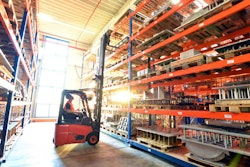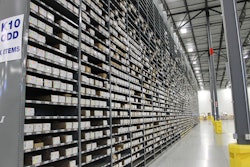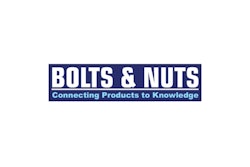Most companies have taken the obvious steps to improve safety, but accidents still occur with alarming frequency. According to the Bureau of Labor Statistics of the U.S. Department of Labor, the transportation and warehousing industry suffered more than 95,000 industrial accidents and illnesses in 2014. That works out to 225 per 10,000 workers — one of the highest rates of any industry. Most estimates put the annual cost of workplace injuries at more than $50 billion, so it makes sense from a business as well as a moral point of view to make safety a priority. Here are some proven ways to increase safety.
Safety Committee
An effective safety committee can help eliminate hazards and improve the safety record in the warehouse. The committee should have members from all areas of the business, including management and warehouse workers. The committee must be run as a meeting of equals rather than a top-down initiative if the group is to be successful at eliciting and implementing great ideas. The team should meet relatively frequently and it should be empowered to correct unsafe conditions quickly.
Safety Audit
Many insurance providers will conduct a no-charge safety audit of your facility to help identify unsafe conditions. They won’t use this as a reason to raise your rates. In fact, it’s in both your best interests to correct any hazards before accidents occur. If you aren’t comfortable involving your insurance company, you can also hire private consultants or safety engineers who specialize in safety audits.
The ASSE (American Society of Safety Engineers) can help put you in touch with an auditor, and it also has checklists and publications for sale that can help with ideas for safety improvements.
Education
When employees understand the hazards, they are less likely to cut corners that can result in injuries. Make sure you take the time to train people on the proper use of equipment and tools. Don’t forget handling instructions for hazardous materials, and the reasons for safety equipment.
In every warehouse, forklifts move materials and people lift boxes and use tools without incident hundreds of times a day. Rushing or forgetting the basic safety rules often leads to accidents even during familiar activities, so education can help keep workers vigilant.
Job Rotation
Boredom is another enemy of safety. When workers repeat the same actions, their minds wander. Switching assignments during the shift can keep workers sharp. Not only are they likely to stay safer because of increased attention, they may actually improve productivity because of increased engagement.
Preventive Maintenance
Improperly maintained equipment can cause accidents. Tools that are dull or worn can be dangerous to use. Forklifts and pallet jacks that are not well maintained may let materials slip and fall, stall during operation or operate erratically. A well-planned and executed preventive maintenance program will ensure your equipment is operating at peak efficiency. Workers will be more productive when their equipment supports their activities, so you get two benefits from one activity — improved safety and increased productivity.
Make Safety a Priority
Workers need to understand that the management team cares about their safety. Make it clear that you care through actions such as those listed above, and never tolerate unsafe conditions or actions when you see them. Simply letting people know that you are concerned for their safety and conscious of unsafe conditions will help make them more vigilant as well.
Mike Kruggel oversees the marketing, website and PPC campaigns for Material Handling Exchange. Material Handling Exchange is a distributor of quality new and used material handling equipment.























